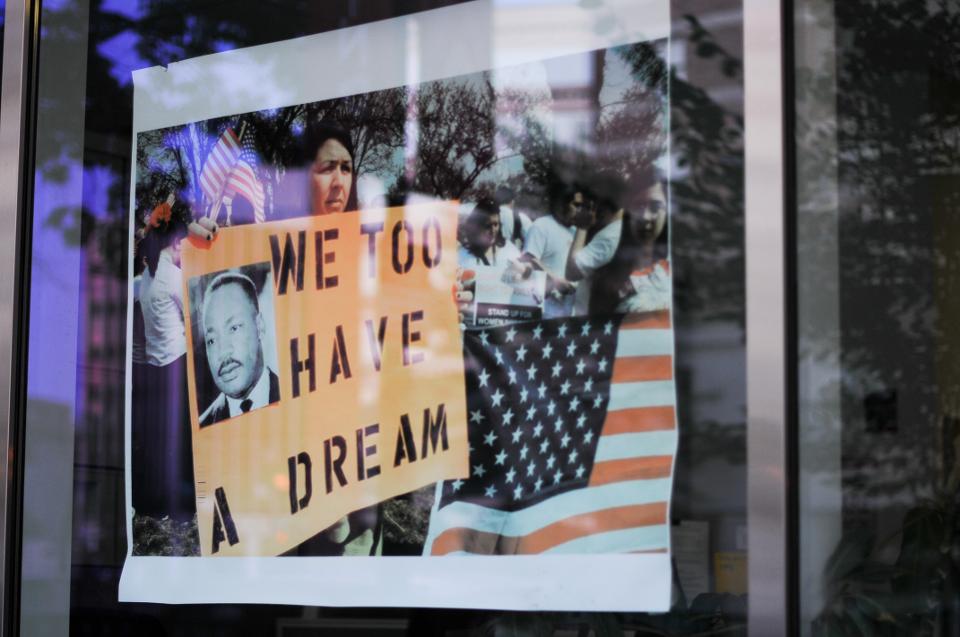Brand Morals Are The New Compass: When Society Speaks, Businesses Must Listen

Vinoba Bhave was hard of hearing, and dressed in the garb of poverty: a homespun cloth around his waist and cheap brown canvas sneakers. But in the India of 1953, this gentle man was known throughout the country. Lit by a flame of authority, Vinoba started one of the country’s most impactful social movements, transitioning the lives of billions.
A learned man, Vinoba was a trusted and faithful disciple of Gandhi. His movement was called “Bhoodan” — or “Land Gift”. Its goal: to help to rectify India’s massive wealth inequity.
The country’s economy at the time was primarily agricultural, with wealth concentrated in the hands of land owners. Like an Indian Robin Hood, Vinoba walked thousands of miles across India for 13 years, visiting landowners one homestead at a time. His request to each one was this: “I have come to loot you with love. If you have four sons, consider me your fifth and give me my share”.
By the time he was done, Vinoba had collected over four million acres of land, which he transferred to the landless. The Bhoodan movement remains today the largest peaceful land transfer in history.
Brand morals are the new compass: When society speaks, businesses must listen
What can we learn from these powerful social movements, whether they are Bhoodan, Mahatma Gandhi’s Salt March, Martin Luther King’s civil rights movement, Nelson Mandela’s fight against Apartheid, or the more recent Women’s March in 2017, where more than seven million women walked around the world to protest Donald Trump becoming the President of United States?
Are there lessons here for those wishing to create large-scale impacts in the business world?
I have studied these movements, and as an executive I have been honored to have led corporate transition projects involving tens of thousands of people over the last 15 years. There are, indeed, key principles from social movements that I bring to bear in my own initiatives. Here are a few.
1. Common enemy or collective pride: Hayagreeva Rao, Professor of Organizational Behavior at Stanford and author of Scaling Excellence, says that you either need a common enemy or a collective pride to galvanize actions towards a major transition. This is, indeed, true in all social movements I have studied and managed. For Gandhi, the enemy was the British; for the Women’s march, the target is Trump. But collective pride can also be a powerful catalyst, as Vinoba Bhave proved.
The same applies within organizations; if we want people to move in the same direction with a strong purpose, we need a compelling narrative, which speaks to collective purpose, and which is easy to understand.
2. Turn grassroots into gold: The Strength of Weak Ties by Mark Granovetter is a seminal paper in the study of social networks. Granovetter explains that your immediate friends may number under a dozen, yet your friends-of-friends and third-degree connections turn out to be, surprisingly, even more important in many situations.
Winning movements, too, are fueled by energy that uses the principal of weak ties. Granovetter points out that the most successful organizational leaders understand that they must turn their approach to power upside-down and let local activists lead.
I use this principle too: rather than an “air war” marketing blitz, change comes from a “ground war”, galvanizing energy across an organization and maximizing the collective action of weakly-connected populations.
3. Embrace the mess: One of the most inspiring people I have met is Brazilian sailor Amyr Klink, who circumnavigated Antarctica solo in 1998, in only 79 days. As Klink readied for the trip, he encountered an obstacle: his boat continuously capsized in rough seas. After puzzling over the problem for a while, Klink took a radical approach: he abandoned the goal of building a boat that would not capsize, and instead designed a hull that, after capsizing, would bounce upright. Says Klink, “Instead of running away from the problem, you should embrace it.”
In social movements and businesses alike, the transformation journey is always messy. There will be policy disagreements, personality conflicts, territorial fights, and much more. I have learned that, in winning movements, the leaders put their egos and organizational identities aside, which allows them to step back, ask “why”, focus on purpose and mission, and discover novel solutions that were not previously apparent.
4. Private truth and public lies: Donald Trump’s presidential victory was a surprise to pollsters. The reason: many Trump voters denied their intentions: they swore out loud they would not vote for him, while secretly planning to do so.
Economist Timur Kuran calls this behavior “preference falsification”. It is the act of misrepresenting one’s wants under perceived social pressures. It happens frequently in everyday life, such as a “white lie” to a dinner host saying we’ve enjoyed their bland meal.
In Private Truths, Public Lies, Kuran argues that preference falsification is not only ubiquitous, but also has huge social and political consequences. Drawing on diverse intellectual traditions, including those rooted in economics, psychology, sociology, and political science, Kuran provides a unified theory of how preference falsification shapes collective decisions, orients structural change, sustains social stability, distorts human knowledge, and conceals political possibilities. The same happens in large organizations. People often tell things they don’t mean and, over a period of time, create systematic patterns of negative unintended consequences.
A wise leader must create an environment of trust that minimizes this tendency, and he or she must act as a fine-tuned sensor to detect and eradicate systematic organizational falsehoods.
5. Be leaderful: In How Change Happens, Leslie Crutchfield explains that building movements is like “capturing lightning in a bottle”. Successful leaders don’t so much create movements out of thin air as tap into the energy that percolates around them. They give that energy shape, channeling it towards a common cause. Successful movements are “leaderful”: they empower local leaders, form coalitions of like-minded allies and unusual suspects; and include people who have lived through the experiences and/or problems that the transformation is overcoming.
6. The tipping point: As transformations progress, there is often a tipping point, where a minority opinion shifts into the majority. A 2018 Sciencearticle, called Experimental evidence for tipping points in social conventionsheds light on how we can push a group towards this point. The paper describes an online experiment in which researchers sought to determine what percentage of total population a minority needs to reach the critical mass necessary to reverse a majority viewpoint.
Surprisingly, this tipping point is just 25 percent. So, in your business, if you wish to bring a fundamental transformation, follow the “25% Revolution” theory: convert the mindset of 25% and you have a chance to reshape your business.
As transformation leaders, our job is to engineer large-scale social change. This task is no less challenging than engineering a new computer system, or designing a new airplane. It is a great challenge and honor to have the opportunity to lead so many people to a new and better place. To do so, I have learned from the great social movements of history from outside the business world as much as from my colleagues within it. The principles I describe above are only a few of what are perhaps hundreds of lessons that you may find from studying history’s great change-makers.

